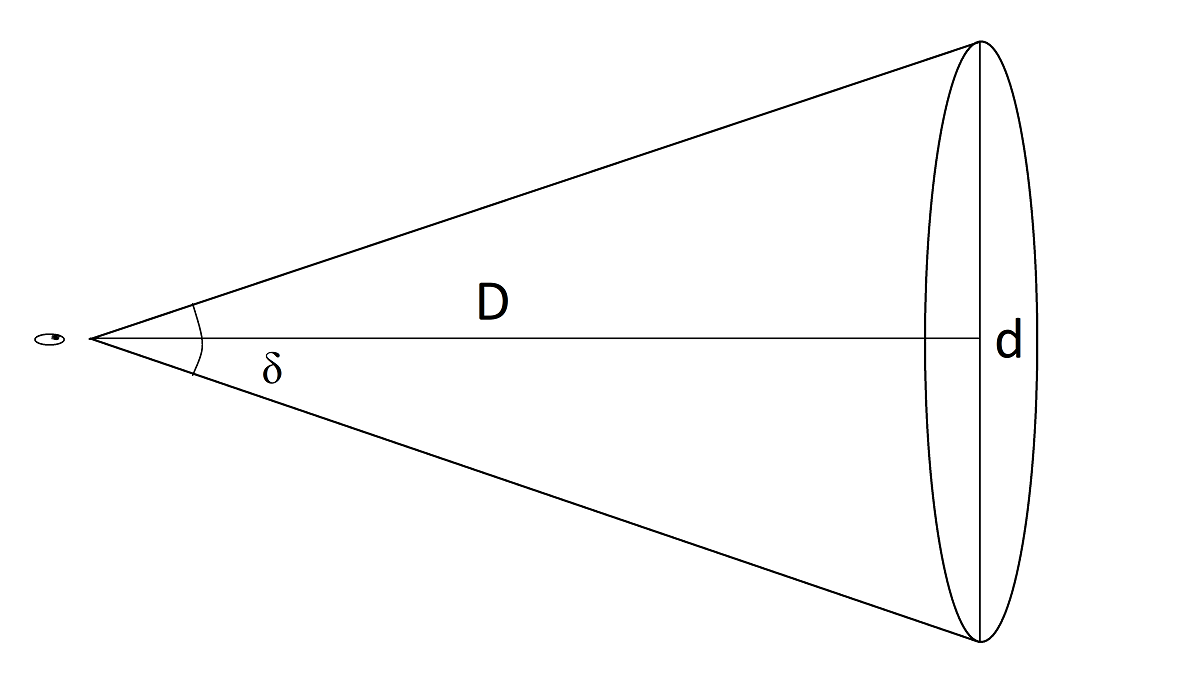Article
Version 1
Preserved in Portico This version is not peer-reviewed
A Novel Method to Calculate Objects’ Apparent Size
Version 1
: Received: 4 June 2020 / Approved: 7 June 2020 / Online: 7 June 2020 (05:29:52 CEST)
How to cite: Lo Cascio, E. A Novel Method to Calculate Objects’ Apparent Size. Preprints 2020, 2020060059. https://doi.org/10.20944/preprints202006.0059.v1 Lo Cascio, E. A Novel Method to Calculate Objects’ Apparent Size. Preprints 2020, 2020060059. https://doi.org/10.20944/preprints202006.0059.v1
Abstract
The angular diameter is the angle subtended by a generic object – an apple or a star – to the eye of an observer, and it describes how large the object appears from a given viewpoint. The angular diameter represents a powerful tool for distance calculations starting from a directly measurable information and it finds application in several contexts varying from cosmography to architecture. In this article, the author proposes a novel equation to calculate the apparent diameter of whatever object. This equation defines the relationship between the object’s apparent diameter with respect to the travelled distance starting from the initial distance R0 at which the observed object is located. Based on the preliminary tests conducted, the model seems to faithfully portray this relation with respect to measured values, also at the astronomical scale, thus considering the Earth-Moon distance, where, the absolute error detected is about 0.56%. Tests highlight also a dependency between the results accuracy and the measurement conditions suggesting a high level of sensibility linked to the initial magnification effect produced by the retina or the artificial lens employed.
Keywords
apparent size; angular diameter distance; apparent diameter
Subject
Computer Science and Mathematics, Mathematics
Copyright: This is an open access article distributed under the Creative Commons Attribution License which permits unrestricted use, distribution, and reproduction in any medium, provided the original work is properly cited.
Comments (0)
We encourage comments and feedback from a broad range of readers. See criteria for comments and our Diversity statement.
Leave a public commentSend a private comment to the author(s)
* All users must log in before leaving a comment








